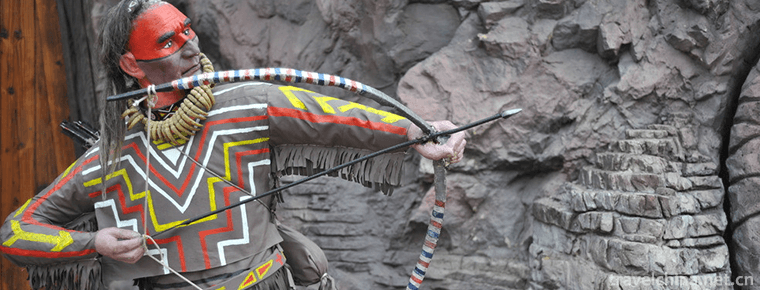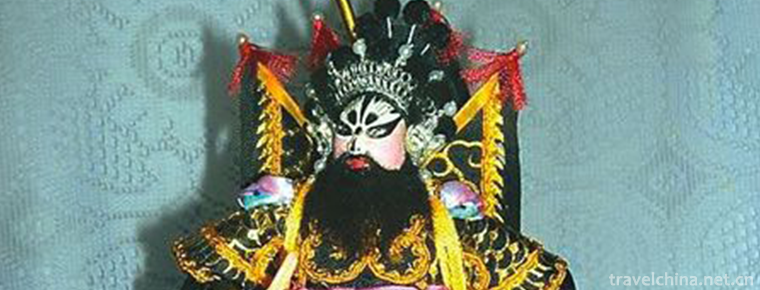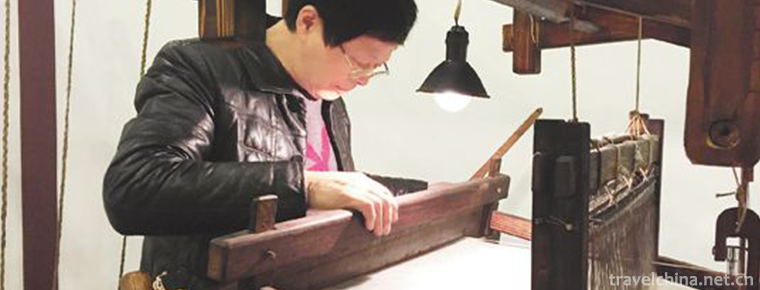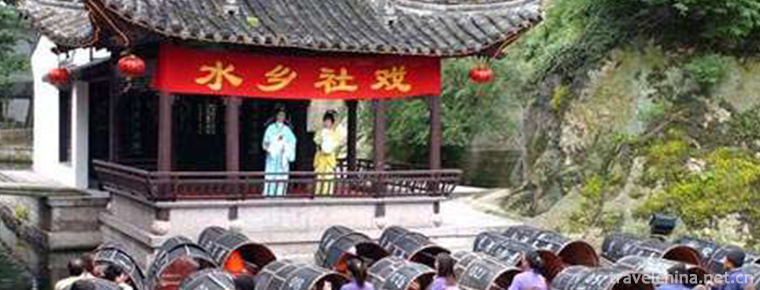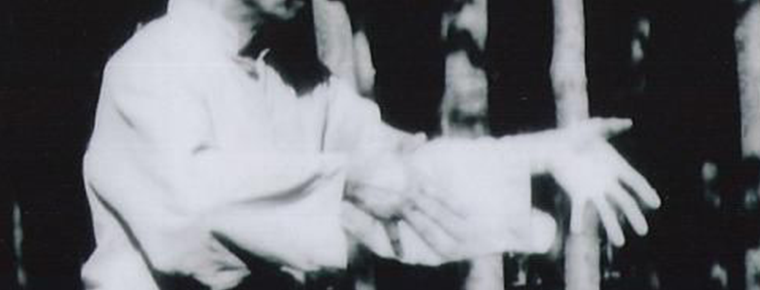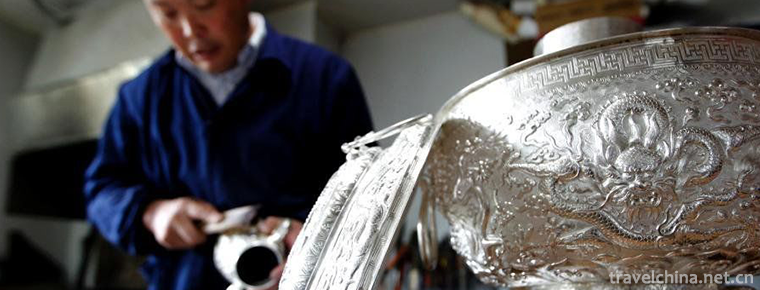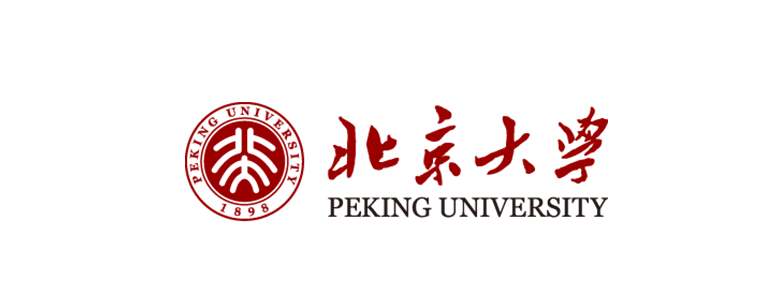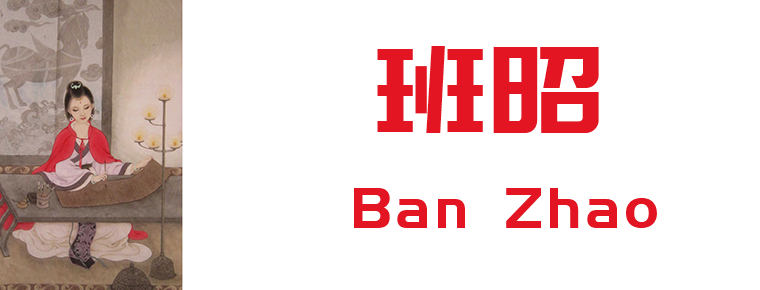Bow and Arrow Making Skills
Bow and Arrow Making Skills
Juyuan bow and arrow making technology, the traditional handicraft of Chaoyang District, Beijing, is one of the national intangible cultural heritage.
Juyuan's bow and arrow making technology inherits the fine tradition of Chinese hyperbolic and reverse bending composite bow. The main body of the bow is bamboo, with horns attached outside, tendons attached inside, and wooden bow and Shaw installed at both ends. The production of bow is divided into two parts: the "white work" of bow and the "painting work" of decoration.
On May 20, 2006, Juyuan's bow and arrow making skills were approved by the State Council and included in the first batch of national intangible cultural heritage list, project number_-44.
historical origin
The Juyuan bow and arrow originated in the Qing Dynasty. At that time, the Juyuan bow and arrow shop was located in the original bow and arrow courtyard at the southwest corner of Beijing's East 40-character intersection. During this period, the archery courtyard belonged to the Royal Special Military Workshop (Royal Workshop). The archery shops there were exclusive to the Royal Empire. Most of the practitioners were royal relatives and mainly Manchu people. Their products were submitted to the Ministry of Army, the Ministry of Rites, the Ministry of Household and so on. No takeout was allowed. At that time, the bow made by Juyuan was mainly used by the Royal palace, and money and food were regularly distributed by the palace according to the number of people in the bow and arrow courtyard.
During the Republic of China, there were only seven "Juyuan" and "Tianyuan" in the bow and arrow courtyard. Out of his love for the traditional skills of bow and arrow and his consciousness of cultural inheritance, Yang Fuxi inherited the full range of skills of Juyuan Royal Archery Workshop in Qing Dynasty.
Process characteristics
Specification grade
Juyuan bow and arrow production techniques are exquisite, material said, excellence. Juyuan is a well-known palace bow and arrow workshop in old Beijing. The bows and arrows made strictly follow the feudal hierarchy. The bow used by the emperor was a special bow. Nine bows were joined together to form a circle so as to embody the meaning of "Heaven and Place" and "Kyushu". There are seven bows in a circle, five bows in a circle, and a doctor's bow in a circle. Juyuan can make bows of different specifications according to the level of feudalism. Folk archery workshops do not know these rules, so there are not so many bow-making specifications.
quality
Juyuan's bow and arrow can better reflect the auspicious implication of keeping away evil spirits and town objects. Juyuan bows and arrows strive for excellence in raw materials and fabrication techniques. Although they are not very different from ordinary folk bows and arrows in terms of quality, the decoration of Juyuan bows and arrows, as a palace archery workshop dedicated to serving the Royal family, is full of people's spiritual sustenance in pursuit of auspicious and safe life, and also reflects the splendor of the Royal family. The bows and arrows made for the royal nobles are mostly hung on the walls of their masters as interior decoration. Naturally, the implication of the antievil town objects should be included in the decorative description of the bows. Even if the royal nobles really want to draw bows and shoot arrows, they are mostly for exercise and self-cultivation. Really want to go out hunting, the Royal noble bow archery is mostly like, the real hunting is the task of many followers. Therefore, while guaranteeing high quality, Juyuan's bows and arrows pay more attention to the decoration of bows and arrows. Juyuan's requirements for artists are much higher than those of folk workshops. This is what the family of Juyuan often said, "Craftsmen are easy to get, but painters are hard to get."
Practical specifications
Juyuan's bows and arrows have different specifications in practice. As an official bow and arrow workshop, Juyuan not only makes fine bows and arrows for the imperial kingdom, but also makes high-quality practical bows and arrows for the military department. In particular, Juyuan will produce bows and arrows for the guards or the Wei Cheng troops. The practicability of bows and arrows made for the military department must be the first, but the selection of materials and the production process are still quite different from those made by the folk. Juyuan's practical bows and arrows are also remarkably exquisite, precious and atmospheric.
Technological process
Juyuan's bow and arrow making technique inherits the national tradition of Chinese hyperbolic and reverse bending composite bow. The traditional bamboo tire is used, one side is covered with tendons facing the shooter, the other side is covered with horns. When the bow is not on the strings, it also bends in an outward arc, so it is called a reverse composite bow. The production process is roughly divided into three main stages: the functional "white work" of bow and the decorative "painting work" of bow string. Generally speaking, the main materials of bowstring are cowhide and cotton thread, while most of the materials used by Juyuan today are cotton thread.
1. "Baihuo" process
The main manufacturing processes of Juyuan's traditional bow include five steps: making bow, looking down handle, leveling horn, laying tendons and climbing bench. There are more than 200 subdivisions. There are more than ten kinds of tools used, such as sawblade, wooden file, tendon comb, bow pillow and so on. There are also many special tools in the production, such as gongs (making bow), horse pressing (special operating table), wire car (line), bow mover (bending bow shape special), arrow pole side, bow extinction template and so on. According to Yang Fuxi's legend, some of the practices and tools left behind in old age are really very good, and I really can't find a more appropriate way to change. After all, Juyuan has been making bows and arrows for more than 300 years. More than a dozen generations of craftsmen have continuously developed this craft, which has been perfected and mature. During this period, many details are not personally operated. They must be highly skilled and unseemly.
(1) To make arch tyres, bamboo poles in Gannan, Jiangxi Province are usually chosen. They need to be strong and strong. After at least a year of shade drying, they become dry bamboo. They are sawed off at both ends and retain a relatively straight section in the middle. The cut bamboo tyres are baked by charcoal fire and bended forcefully to form a circular arc. After that, they are supported between the door and the floor and fixed for 24 hours to form.
(2) Looking down, most of the materials for making the look-up bar are elm, sawing rectangular, and its function is embedded in the middle of the inside of the bamboo tyre for easy grasp. On the inner surface of the bamboo tyre, a self-made Gong is used to cut a groove about 4cm back for inserting the lookout. The depth should be exactly controlled at half of the thickness of the positive bamboo tyre, and then be flattened with a wooden file. The pigskin bladder cooked in advance is heated and softened, and then evenly coated with pigskin glue at the grooves of bamboo tires and the cut hopper, and then**glued together slightly dry. Adhesive is used for animal glue, and also natural material. It was fish swimming glue at the later stage, which was originally made of pig glue. Originally, there was a special teacher in the archery courtyard. In order to stick firmly, we should use special tools such as horse-pressing and mistake-walking, fix the sticky handles and bamboo tyres on the horse-pressing, tie them firmly with the mistake-driving rope and hold them for more than ten hours.
(3) Leniujiao, making a bow requires buffalo horn, most of which are produced in Hubei Province, and the length is more than 60 centimeters. Saw the buffalo horns along the side of the outer arc. Only two of the buffalo horns are used on the arches. The two horns that are sawn are ground by hand and then pasted onto the bow tyre. The horns are ground to about 3mm and roasted slightly on the fire until the horns soften slowly. Then they are flattened with heavy objects. Place the processed straight corners on the bench, make the inside of the corners upward, then draw a stripe on the corners, so that the corners stick more firmly when coated with pigskin bladder.
(4) Spread beef tendons. Buffalo's back tendons are selected for the tendons. After air-drying, they are wetted and then hard by hand. Then they are torn apart to form fine filaments. Teared ribs are bundled and soaked in water when used. The temperature of the external environment directly affects the soaking time. The longer the soaking time, the better the effect of the bow laid. According to the length of the tendons, it is determined that several tendons should be laid, starting from the middle, then extending to one end. After laying, the tendons should be dried in shade for one to two days, and then the other end should be laid. After laying, attention should be paid to checking whether the whole arch is deformed. The number of layers of reinforcement directly affects the size of work. Generally, the bow should be laid three layers. Take a 50-pound bow as an example, it should be laid five layers and a 60-pound bow should be laid six layers.
(5) To climb a bench, first of all, put the bow with a good bow on the bench and tie the bow to the plate with a rope. Then two bow pillows are cushioned under the arch body to make the arch body deform more. Then the bow holder is released. At this time, the arc between the two arms of the bow body is different, so we should first use a plate file to drop the smaller arc of the horn surface, but also use both hands to feel whether the forces on both sides are equal.
2. "Painting Live" Technology
After the Toxoplasma is formed, it is a "painting" step. The Toxoplasma is refined, polished and polished. The moistureproof birch bark is affixed to the toxoplasma. The bow and arrow are most afraid of dampness. The water-proof performance of the birch bark is quite good. Wrap the lookout with cork paper, wrap the lookout with shark skin or snake skin, paste auspicious patterns on the bow, and then paint the finished product.
3. Arrow Making Technology
The main steps of arrow making are also five steps, including adjusting rod, skinning, scraper rod, installation arrow and tail feather. Juyuan's bows and arrows are very strict in material requirements. The arrows are made of "six trees" selected from the deep mountain area of Mentougou, Xishan, Beijing. Many of the six logs purchased are not straight, and the curved poles need to be straightened before they can be used. The key step of arrow making is scraper. The arrow pole should come out at different time intervals with different sides. It needs to be slightly thicker in the middle, slightly thinner at both ends, and slightly thicker near the arrow buckle.
Inheritance and protection
Inheritance value
Juyuan's bow and arrow production technology completely preserves the complex production process, exquisite process and exquisite technology of traditional bow and arrow production, and concentrates the development track of Chinese traditional bow and arrow culture. These techniques can hardly be replaced by modern technology. They are outstanding representatives of Chinese traditional handicraft technology and a valuable historical and cultural heritage.
Juyuan bow and arrow is also the epitome of the development track of Chinese traditional bow and arrow and related culture. Besides being used as weapons, entertainment and collections, the bow and arrow made by Juyuan has a special function that can not be replaced by any modern technology imitation bow and crossbow or other similar tools. It has a special effect on the study of Chinese social development, etiquette and entertainment, weapons and crafts, national customs, production and life, arts and crafts, and competitions. Technical sports undoubtedly have high cognitive value and academic value.
Inheritance status
The inheritance and development of Juyuan's bow and arrow making skills are now facing great difficulties. The inheritor, Yang Fuxi, lives in distress, has poor working conditions and environment, and has no apprentices to inherit his skills. If protective measures are not taken in time, the loss of skills is only a matter of time.
Inheriting characters
Yang Fuxi, male, Han nationality, born in Beijing in 1958. In June 2007, Yang Fuxi was selected as the representative successor of the first batch of national intangible cultural heritage projects and declared in Chaoyang District, Beijing.
protective measures
In 2000, Mr. Xie Sufang, Director of Intellectual Property Department of Hong Kong, published a book entitled "Fourteen Volumes of Archery", which is the first book on the history of Chinese archery since the Ming Dynasty, introducing Juyuan Archery Shop.
In January 2008, Xinhua Publishing House published the book Juyuan Bow and Arrow. This book comprehensively describes the development history of Juyuan Archery Shop, and has been vowed as the first popular reading book of contemporary Chinese Archery by scholars.
social influence
international repercussions
In 1951, British businessmen signed a long-term contract with Juyuan through Beijing Import and Export Corporation, importing 30 bows from Juyuan every month.
Important exhibition
From October 6 to 7, 2007, Juyuan's bow and arrow making skills were displayed in the "Beijing People's Mid-Autumn Festival" folk garden activity held by the Beijing Folklore Museum (Dongyue Temple).
On June 6, 2008, Juyuan's bow and arrow making skills were displayed in the exhibition of Beijing's intangible cultural heritage project "The Goods of Old Beijing" held at Daxing Film Theatre.
Cultural anecdotes
Every year, April 21 of the lunar calendar is the day of ancestor worship in the bow and arrow industry. The bow and arrow shops in the bow and arrow courtyard take turns to sit in the village. On this day, all the artisans of the bow and arrow shop closed their business. They went to the temple of the bow and arrow yard to attend the celebrations, burn incense and offer sacrifices, hold banquets and singing performances, clean the Buddha statues, and dress the ancestors in clothes made of leaves and robes. Women and children at home eat boiled meat, yellow croaker, and burn sweet kowtow. The expenses for ancestor worship activities are shared by all bow and arrow shops in the Archery Courtyard. This activity lasted until 1952.

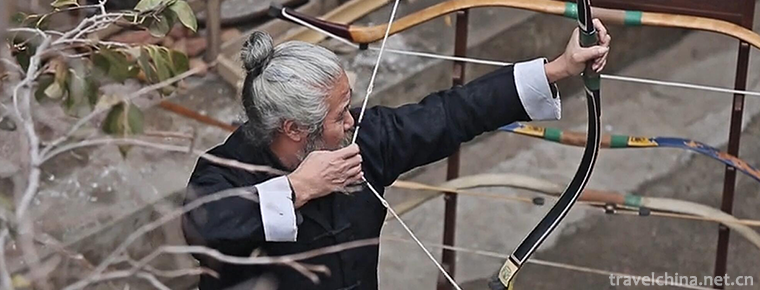
-
Guilin Happy Land Theme Park
Guilin Lemandi theme park Gudong Waterfall is suitable for sightseeing all the year round. April-October is the best time for Guilin tourism. The scenic spot is located in Guilin.
Views: 155 Time 2018-12-12 -
Zhenfoshan Scenic Spot
Zhenfoshan Scenic Spot, National AAAA Class Tourist Scenic Spot, Provincial Scenic Spot and Provincial Key Cultural Relics Protection Unit are the "Three Religious Holy Places" integrating B.
Views: 136 Time 2019-03-17 -
Color tie
Color tie Coloured tie is also called paper tie and silk tie. It is a kind of simulation art of Chinese traditional folk crafts, and also a comprehensive handicraft..
Views: 333 Time 2019-04-04 -
Silk Weaving Techniques
Silk weaving is a traditional Chinese handicraft with a long history. It consists of four parts: Yuhang Qingshui silk sponge production technology, Hangluo weaving technology.
Views: 167 Time 2019-04-04 -
Lei opera
Lei Opera, formerly known as the Grand Opera Class, was once known as "Leizhou Opera" because of its early tune of Leizhou songs. It is one of the national intangible cultural heritage of Le.
Views: 146 Time 2019-05-11 -
Shuixiang Opera
Shuixiang opera is a traditional folk cultural activity in Shaoxing, Zhejiang Province. Waterfront theatres are mostly built on rivers in front of temples such as land temples, so they are called &quo.
Views: 170 Time 2019-06-16 -
Forging Skill of Iron Painting in Wuhu
Iron painting originated in the Song Dynasty and prevailed in the Northern Song Dynasty. During the reign of Kangxi in the Qing Dynasty, iron paintings in Wuhu, Anhui Province, became self-contained a.
Views: 133 Time 2019-06-29 -
Yi Quan
Yiquan, also known as Dacheng Quan, is one of the traditional Chinese boxing and belongs to Neijia Quan. It comes from mind boxing. Including: standing pile, trial, footwork, strength, sound test, pus.
Views: 169 Time 2019-07-13 -
Silver and Copper Ware Making and Gold smelting Techniques
Silver and bronze wares production and gold mincing skills, local traditional skills in Huangzhong County, Qinghai Province, one of the national intangible cultural heritage..
Views: 202 Time 2019-07-13 -
Peking University
Founded in 1898, Peking University was first named as Beijing Normal University Hall. It was the first national comprehensive university in China and the highest educational administrative organ at th.
Views: 245 Time 2019-08-30 -
Ban Zhao
Ban Zhao (about 45 years - about 117 years), also known as Ji, the word Hui ban. Fufeng An Ling (now northeast of Xianyang, Shaanxi), a historian and a writer of Eastern Han Dynasty. historian Ban Bi .
Views: 289 Time 2019-09-11 -
Dragon elbow mountain
Longcub mountain, also known as yuxu mountain, is located in Longquan Township, northwest of Huili County, Liangshan Yi Autonomous Prefecture, Sichuan Province, China. It is also known as yuxu mountain at the junction of Baiguowan .
Views: 347 Time 2020-10-16
